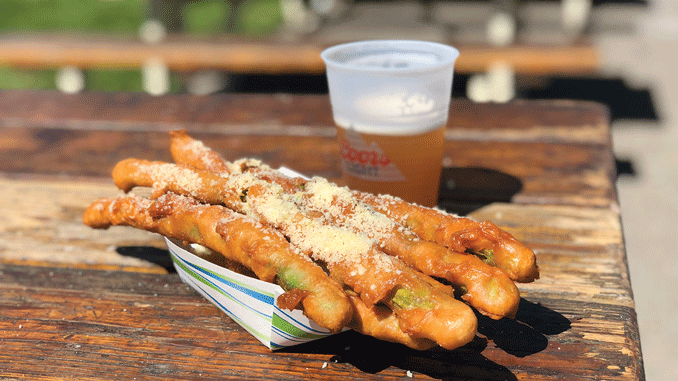
Asparagus has always had a place in San Joaquin County’s fields and at the table. Celebrated for the rich flavor and tender spears that the county’s soil produced, asparagus was a labor-intensive, but beloved and commercially successful crop for more than a century. The industry, like many others in agriculture, has been hit hard by strict wage regulation and foreign competition, but locals are still showing their love. And the San Joaquin Asparagus Festival, celebrating its 35th year, proves local roots run deep.
“San Joaquin County is a melting pot for agriculture and things that go with it,” says Heather Chambers, the festival’s executive assistant. “The Asparagus Festival has been one of the crown jewels of Stockton.”
Asparagus made its way to county farms as early as the 1850s, half a century before Ripon’s famous almond trees first took root. As a spring crop, asparagus was one of the first foods a farm could sell each year. And while seedlings took two or more years to grow to a harvestable size, the crown could be harvested for the next 10 to 15 years. Production peaked in the 1950s with nearly 60,000 acres. However, in the following decades, asparagus farming began to decline, making way for the agricultural diversity that can be found thriving in the county’s rich soil today.
Despite a now diverse agricultural profile in San Joaquin County, there’s no doubt that local loyalties toward the veggie are still there. The San Joaquin Asparagus Festival, first established in 1985, celebrates both the history of the crop in SJC as well as its modern applications from asparagus ice cream to asparagus margaritas. “The asparagus this year is locally grown by Klein Family Farms,” says Heather. “I am estimating that a total of 20,000 pounds of asparagus is consumed over the three-day festival.”
With nearly two dozen dishes starring locally grown asparagus this year alone, Heather promises that the festival will continue to pay homage to the agricultural legacy of over a century and a half of asparagus farming in the county and fulfill the community’s craving for the tender green crowns for years to come.

